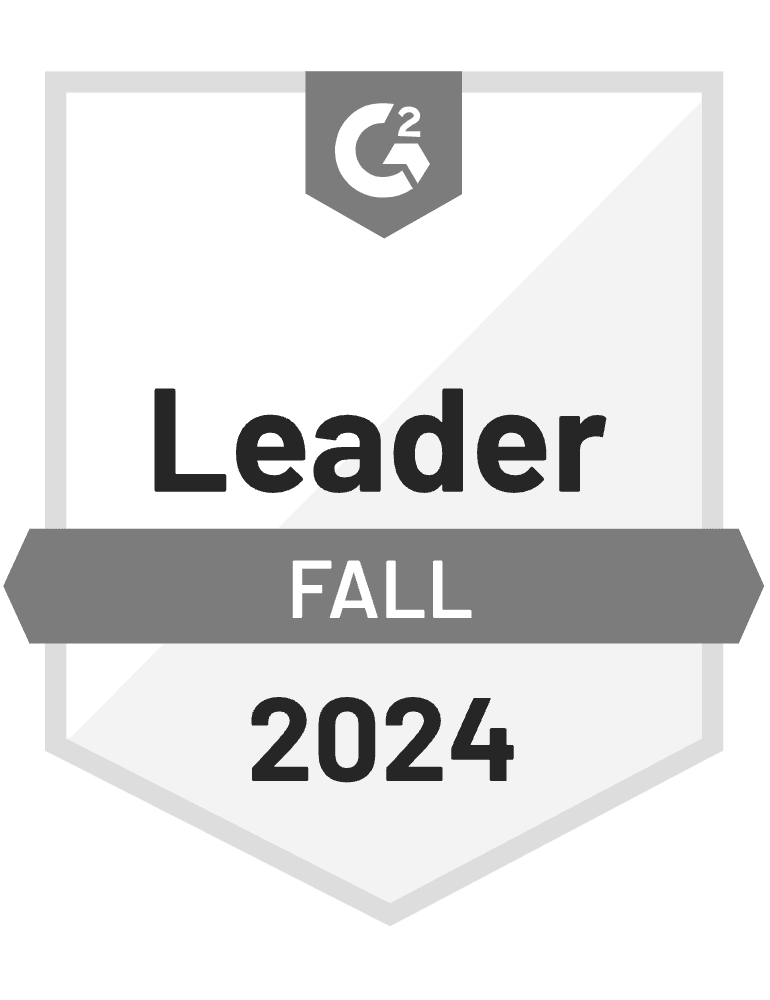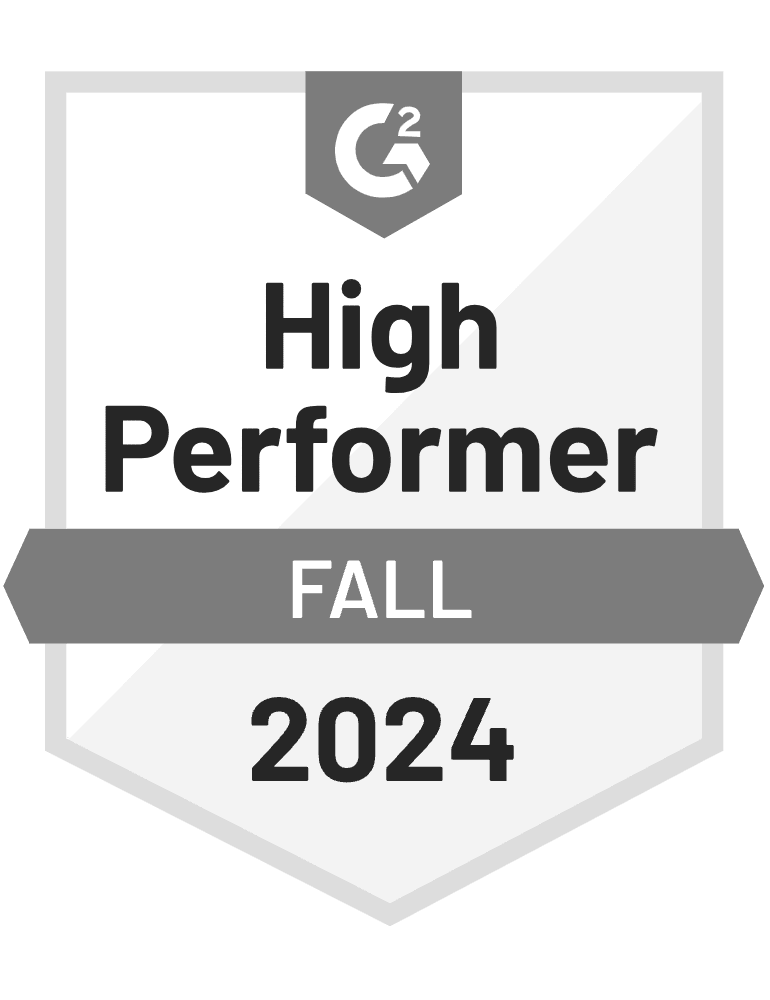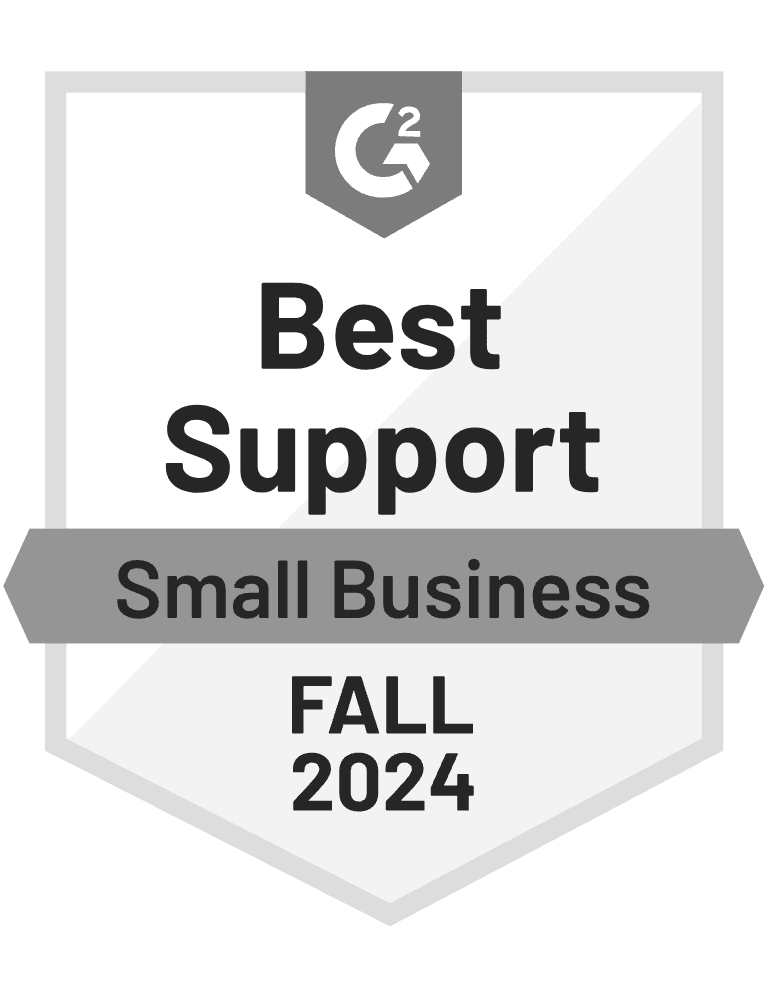- Blog
- How to Increase Sales with Personalized Product Recommendations
How to Increase Sales with Personalized Product Recommendations
-
Nikolett Lorincz
- Personalization
- 6 min read
Table of Contents
Ever wish online shopping could be a bit more personal? Wouldn’t it be great to have someone who knows your taste and shows you exactly what you need?
That’s where personalized product recommendations come in. They turn your online store into a tailored shopping experience for every visitor, guiding them to products they’ll love and, more importantly, buy.
In this article, we’ll discuss the definition of personalized product recommendations, their benefits for your online store, and how to implement personalized product recommendations effectively.
Let’s jump right in!
What are personalized product recommendations?
Personalized product recommendations are suggestions made to users based on their behavior, preferences, and interactions with your ecommerce store.
This can include anything from showing products similar to those they’ve browsed to suggesting complementary items based on their purchase history.
It’s like having a personal shopper for every visitor on your website, guiding them to products they’re more likely to buy.
Types of personalized recommendations
Now that we understand what personalized product recommendations are, let’s dive into the different types you can implement to maximize their effectiveness.
From browsing history to real-time behavior, each method offers unique advantages for keeping customers engaged and driving sales.
1. Product suggestions based on browsing history
This type of recommendation looks at the pages and products a user has viewed. For example, if a customer spends a lot of time looking at summer dresses, the system will suggest similar styles or brands.
It’s an effective way of keeping potential buyers engaged and showing them more relevant products that they’re likely to be interested in.
2. Recommendations based on purchase history
When a user makes a purchase, it’s a goldmine of information. By analyzing past purchases, you can suggest products that complement or enhance what they’ve bought before.
For example, if someone bought a camera, you might recommend lenses or a tripod.
Recommending products based on purchase history can significantly enhance customer retention.
3. Cross-selling and upselling techniques
Cross-selling involves suggesting products related to the customer’s current purchase. For example, if the customer is purchasing a laptop, you might recommend a case or an external hard drive.
Upselling, on the other hand, involves suggesting a higher-end product. If they’re considering a mid-range phone, you might show them the latest premium model with more features.
Recognizing high purchase intent can help you make effective cross-selling and upselling recommendations, driving more revenue and increasing the size of the customer’s cart.
4. Real-time personalization based on user behavior
Real-time personalization adjusts recommendations on the fly as users interact with your site.
If a visitor starts browsing running shoes after initially looking at casual wear, the system will quickly adapt and show more athletic gear.
This dynamic approach ensures that the recommendations remain relevant and timely, providing relevant recommendations that enhance the personalized shopping experience.
What are the benefits of personalized recommendations?
It’s also essential to understand why personalized recommendations matter.
Personalized recommendations can enhance the customer journey by influencing buyers at every stage, from the initial interaction with the brand to repeat purchases.
Let’s explore the significant benefits that personalized recommendations bring to both your customers and your business.
- Improved customer experience: Customers appreciate a tailored shopping experience. When recommendations are spot-on, the shopping process is smoother and more enjoyable. This personalized touch can significantly enhance the user experience, making visitors feel valued and understood.
- Increased sales and conversion rates: Personalized recommendations can lead to higher conversion rates. When users see products that match their preferences, they’re more likely to make a purchase. It’s a simple yet powerful way to boost your sales figures.
- Enhanced customer loyalty and retention: Happy customers are loyal customers. By consistently providing relevant product suggestions, you build a relationship with your customers. This makes it more likely that they’ll return to your store, as they know they’ll find products they love.
How to create personalized product recommendations for your online store?
Want to use product recommendations effectively in your own online store?
A recommendation engine plays a crucial role in creating personalized product recommendations by utilizing AI and machine learning algorithms to understand which products are likely to be of highest interest to each individual shopper.
Let’s walk through the process of creating personalized product recommendations that will enhance your customers’ shopping experience and boost your sales.
Step 1: Find the right tool
Choosing the right tool for personalized product recommendations is crucial for the success of your strategy.
Many ecommerce platforms, such as Shopify, Magento, and WooCommerce, come with built-in recommendation systems. These tools are often easy to set up and can quickly start generating recommendations based on your existing customer data. They provide a good starting point, especially if you’re new to personalized recommendations.
If your ecommerce platform’s built-in tools don’t offer the flexibility or advanced features you need, third-party apps can be a great alternative. These apps often provide more robust functionalities, such as advanced targeting, A/B testing, and detailed analytics.
OptiMonk is a popular choice among online retailers. It allows you to display personalized product recommendations in various formats:
- Popups: Capture visitors’ attention with tailored suggestions as they browse your site.
- Side messages: Subtly nudge users towards products they might like with messages that slide in from the side.
- Embedded content: Integrate recommendations directly into your product pages, homepage, or checkout process for a seamless shopping experience.
Step 2: Decide what type of recommendation you want to use
To maximize the effectiveness of your personalized suggestions, you’ll want to choose the right type of recommendation for different parts of your ecommerce store.
Tools like OptiMonk offer versatile options to ensure your recommendations are always relevant and engaging.
For example, with OptiMonk you could:
- recommend complementary or similar products on product pages;
- highlight the most popular items or new arrivals within the category on each category page;
- display the products they viewed during their last visit on the homepage;
- and so on.
Step 3: Segment your audience
Effective audience segmentation is key to delivering highly personalized product recommendations.
Group users based on common behaviors or preferences. This can help you tailor recommendations more precisely, which will make your efforts more fruitful.
Step 4: Test and optimize
Implementing personalized product recommendations is not a one-time task but rather an ongoing process.
To ensure that your recommendations are always relevant and effective, you need to continuously test and optimize them to see what works best.
Use A/B testing to compare different approaches and refine your strategy over time.
5 real-life examples of successful implementation
Now let’s explore five real-life examples of personalized product recommendations that were implemented successfully, showcasing how different businesses have harnessed the power of personalization to drive impressive results.
1. Craft Spirit Shop
Craft Spirit Shop provides an excellent example of how personalized product recommendations can significantly boost sales and enhance the customer experience.
They implemented exit popups on product pages that automatically suggested products tailored to each visitor’s browsing behavior. When a visitor showed interest in a specific type of product, the exit popup recommended similar items, enhancing the likelihood of a purchase.
For instance, visitors who browsed bourbon products received a popup recommending award-winning bourbons.
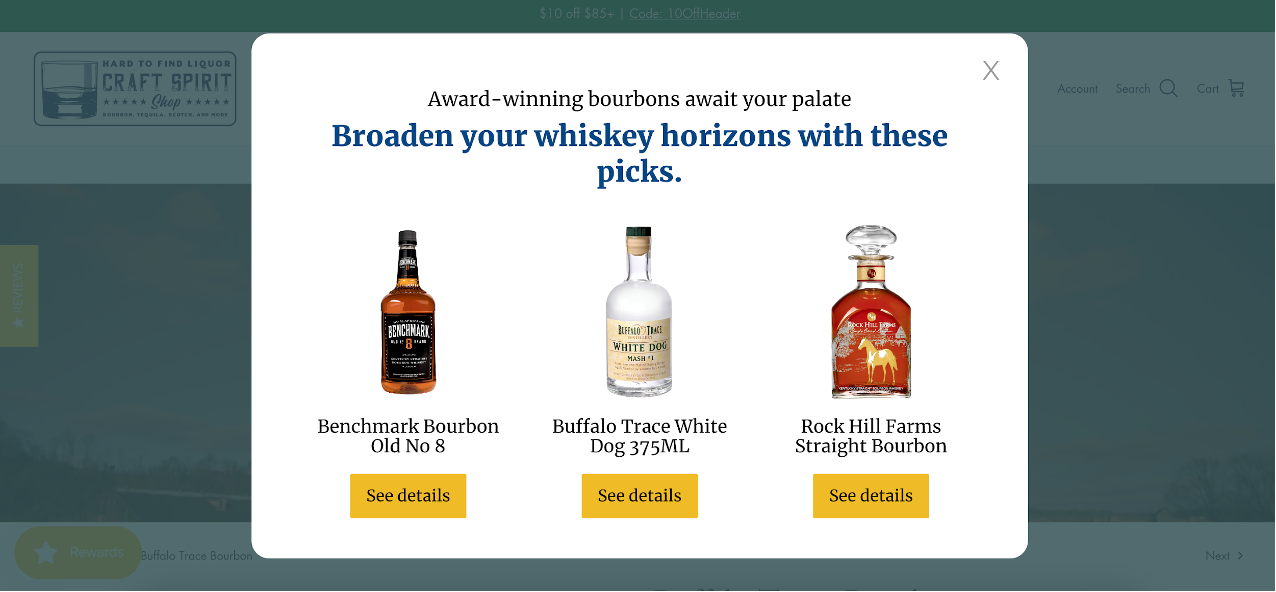
Meanwhile, for visitors interested in tequila, the popup promoted premium tequilas, perfectly aligning with their browsing behavior and preferences.
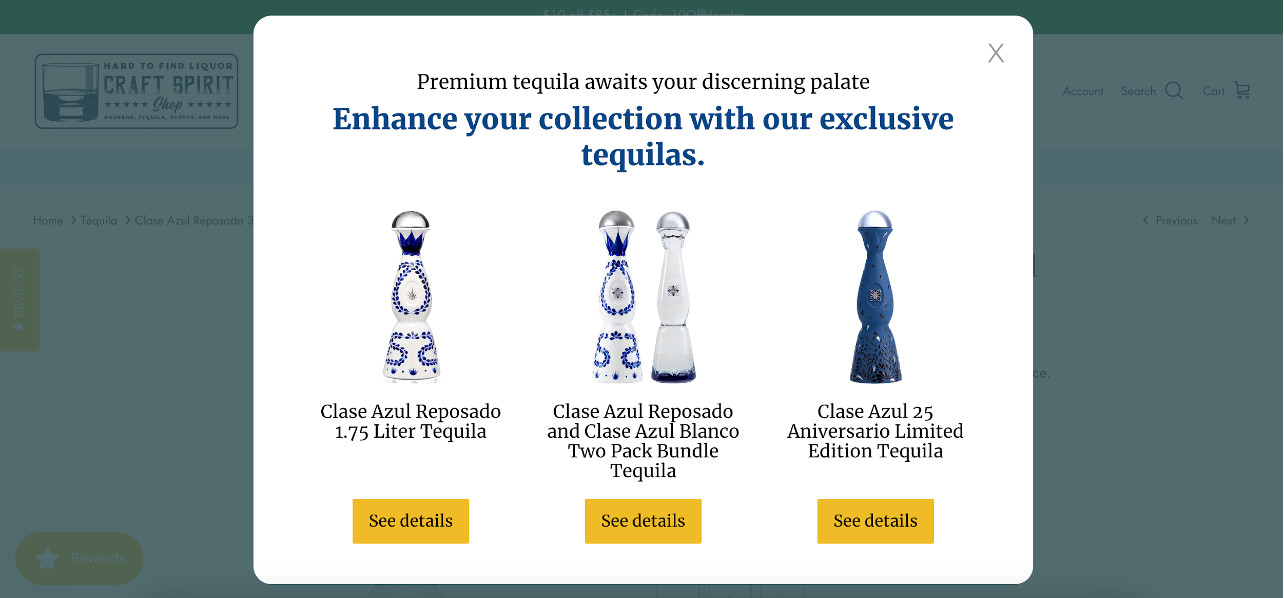
These popups were made even more effective with dynamically personalized headlines. This level of customization ensured that the recommendations felt highly relevant and engaging for each visitor.
Visitors who saw these personalized popups made purchases 38.5% more frequently, and they spent 77.9% more money, significantly increasing revenue per person.
2. Goldelucks
Goldelucks, known for their delectable treats, successfully implemented personalized product recommendation popups to enhance the customer experience and boost sales.
Using OptiMonk’s Smart Popups tool, they crafted exit-intent popups for visitors on product pages, ensuring that the recommendations were both timely and relevant.
These popups featured AI-written headlines and product suggestions tailored to each visitor’s browsing history and preferences.
For example, visitors who showed interest in a festive product received a popup recommending similar holiday-themed treats:
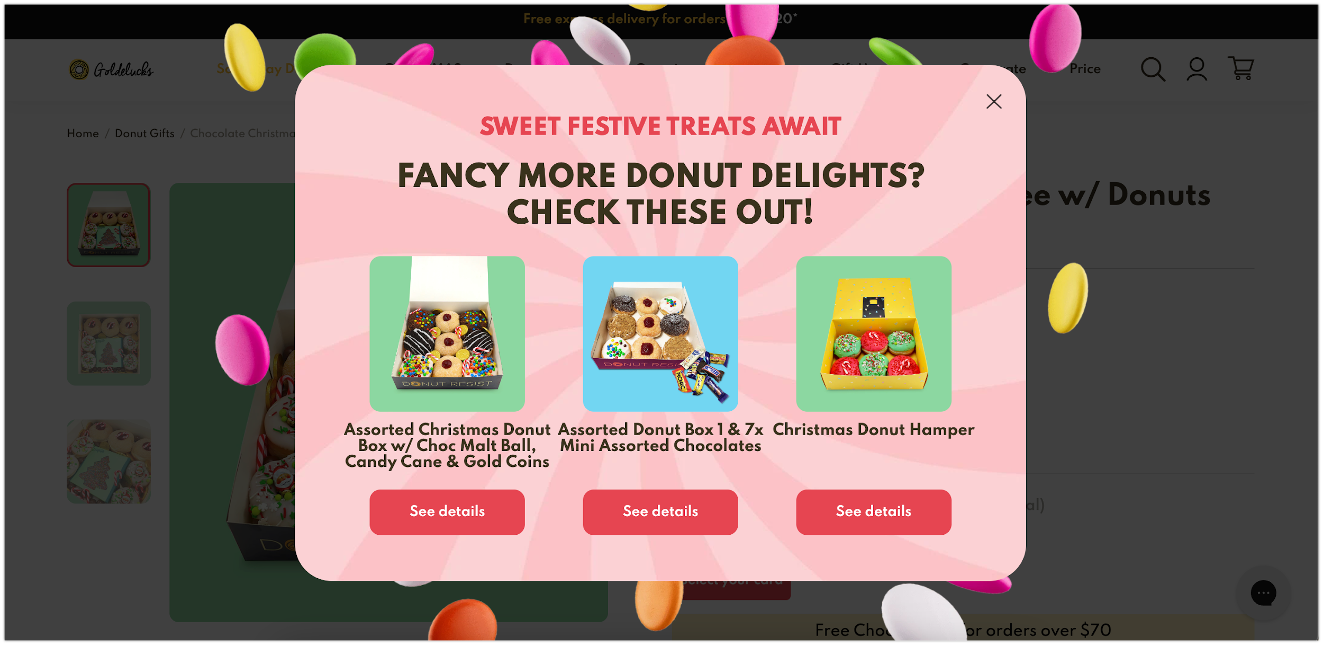
Goldelucks experienced a 12.27% increase in orders, demonstrating the effectiveness of targeted and timely recommendations in converting hesitant visitors into buyers.
3. Lammle’s
Lammle’s focused on enhancing the shopping experience on their category pages, where visitors often spent considerable time browsing but frequently left without making a purchase.
They recognized that visitors on category pages were highly engaged but often faced difficulty in making a final purchase decision. To address this, they implemented popups featuring the most popular products in each category.
The popups were designed to appear after new visitors had spent 40 seconds exploring the category pages. This timing was crucial as it captured the visitors’ attention just when they were likely to need help in choosing the right product.
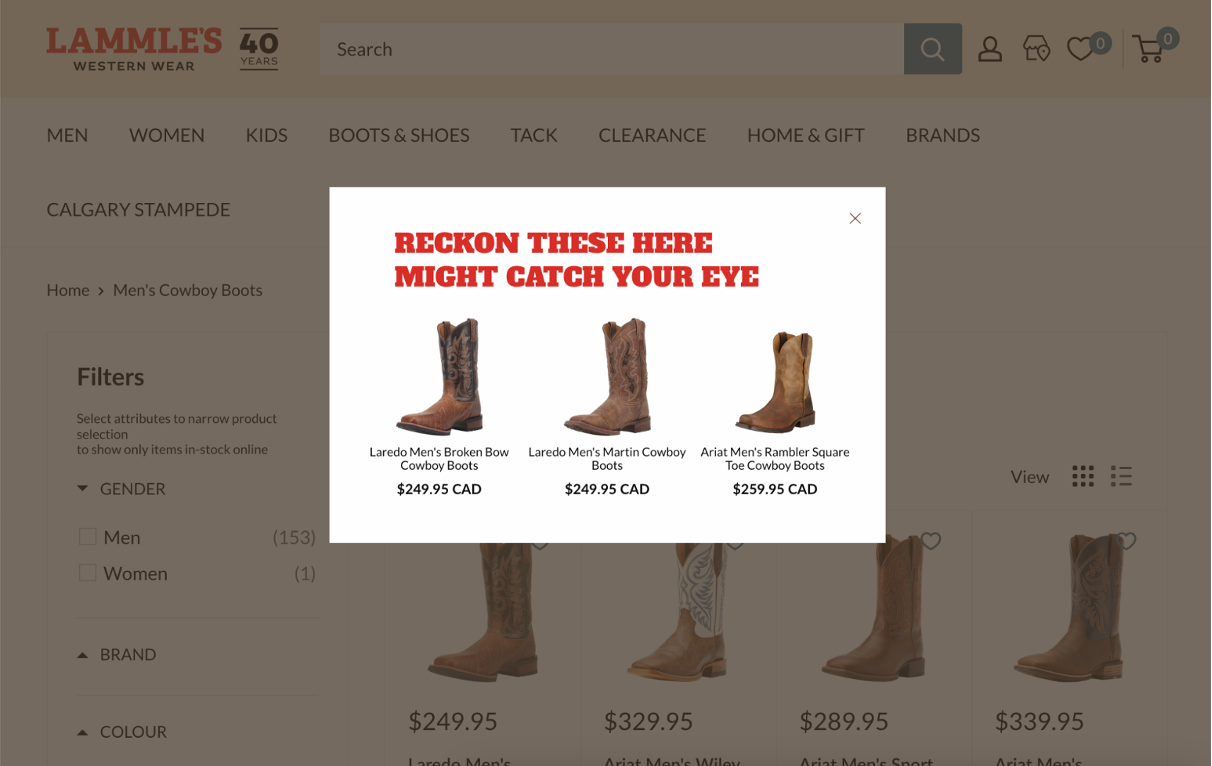
By implementing these popups, Lammle’s Western Wear experienced a 26.3% increase in revenue from category page shoppers.
4. Bukvybag
Bukvybag, a brand known for its stylish and functional bags, implemented exit-intent popups that showcased their best-selling products.
This strategy was designed to capture the attention of visitors who were about to leave the site, encouraging them to explore popular items they might have missed.
To make these popups more compelling, Bukvybag used an engaging headline that sparked curiosity and urgency.
They employed the copy “Top Picks of August” to highlight their best-selling products. By utilizing OptiMonk’s Smart Tags feature, the headline automatically updated each month, ensuring that the offer remained current and fresh.
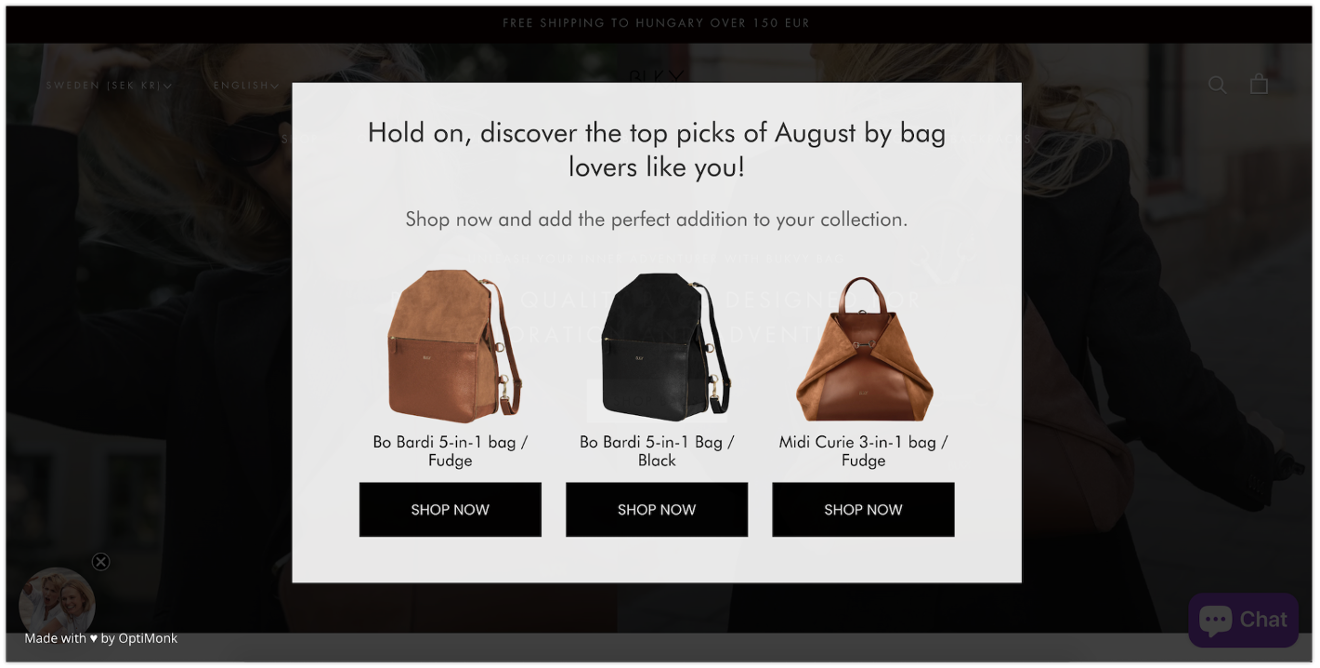
Bukvybag saw a 43% increase in orders, demonstrating the power of timely, personalized recommendations.
5. Olive Oil Lovers
The Olive Oil Lovers team strategically promoted the right products and offered timely discounts to enhance customer satisfaction and increase sales.
They wanted to encourage customers to purchase additional products by offering discounts triggered by specific actions. They implemented this strategy effectively using OptiMonk’s cart rules.
When a visitor added certain products to their cart, a popup was triggered offering a 20% discount on one of Olive Oil Lovers’ best-selling items.
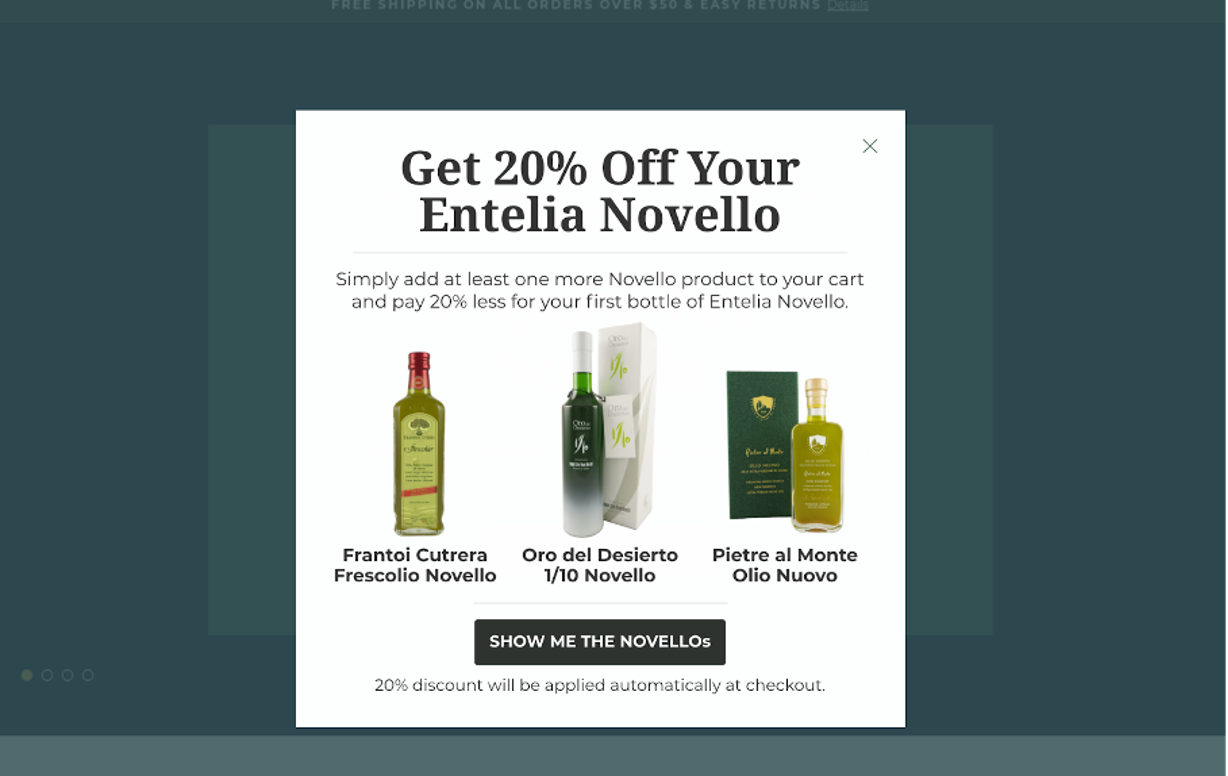
The campaign achieved a conversion rate of 37%, and they saw a 15% increase in average order value.
FAQ
What is collaborative filtering?
Collaborative filtering is a method used by recommendation algorithms to predict a user’s interests by analyzing the preferences and behaviors of similar users. This technique relies on the assumption that if two users have agreed on certain items in the past, they are likely to agree on other items in the future.
Collaborative filtering can be user-based, where recommendations are made based on users with similar behavior, or item-based, where recommendations are based on items that have been similarly rated by users. It’s commonly used in ecommerce stores to suggest products, in streaming services to recommend shows or music, and in social media to suggest friends or content.
How to display complementary products?
Displaying complementary products involves showing items that enhance or are typically purchased alongside the main product a customer is viewing. Here are some strategies to do this effectively:
- Use your product detail page to showcase accessories or related items. For instance, if a customer is viewing a laptop, you could display cases, mice, or external hard drives.
- Suggest relevant products right before checkout. For example, if a customer has added a camera to their cart, a relevant recommendation could be lenses or memory cards.
- Use exit-intent or time-based popups to highlight complementary products. This can grab the customer’s attention before they leave the site or after they’ve spent a certain amount of time on a page.
What are the best recommendation strategies?
The best product recommendations often depend on your specific business and customer base, but here are some strategies that are generally effective:
- Personalized recommendations: Use customer data, such as browsing history and past purchases, to make tailored suggestions.
- Bestsellers: Highlighting best-selling products can leverage the power of social proof to encourage purchases.
- New arrivals: Showcasing the latest products keeps your site fresh and interesting to repeat customers.
- Frequently bought together: Suggest products that are commonly purchased together to increase the average order value.
- Trending products: Highlight items that are currently popular to create a sense of urgency and capitalize on trends.
- Customer segmentation: Group customers based on similar behaviors or preferences and tailor recommendations to each segment.
What are the best recommendation engines?
Several recommendation engines stand out for their effectiveness and versatility:
- OptiMonk: Known for its smart popups and personalized recommendation capabilities, OptiMonk is great for ecommerce companies looking to boost conversions.
- Nosto: Offers AI-driven recommendations and can personalize the entire shopping experience, from product pages to email marketing.
- Recombee: Utilizes advanced machine learning algorithms to provide highly accurate recommendations.
- Barilliance: Provides real-time personalization and product recommendations across web and email channels.
- Amazon Personalize: Developed by Amazon, this engine uses machine learning to deliver highly personalized recommendations tailored to individual users.
Wrapping up
Personalized product recommendations are a game-changer for any ecommerce site.
They make shopping more enjoyable for customers and significantly boost sales and customer loyalty.
By implementing the right tools and strategies, you can transform your ecommerce site into a personalized shopping paradise.
If you want to increase your ecommerce sales and average order value, give OptiMonk’s ready-to-use product recommendation templates a try:
Migration has never been easier
We made switching a no-brainer with our free, white-glove onboarding service so you can get started in the blink of an eye.
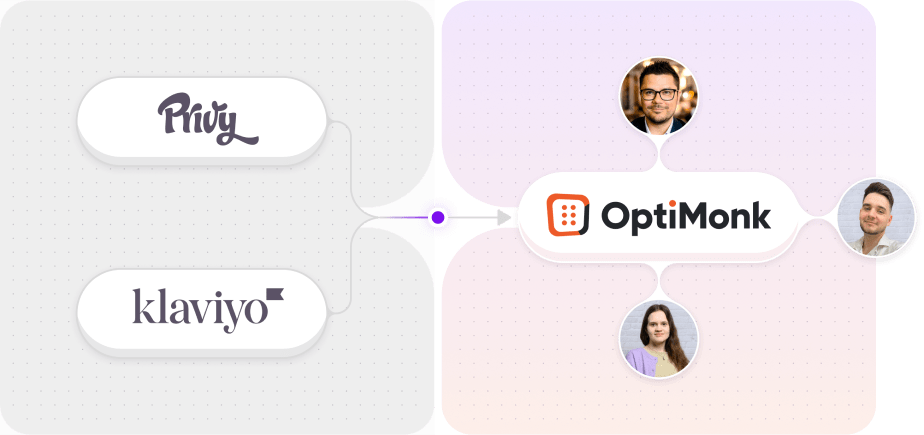
What should you do next?
Thanks for reading till the end. Here are 4 ways we can help you grow your business:
Boost conversions with proven use cases
Explore our Use Case Library, filled with actionable personalization examples and step-by-step guides to unlock your website's full potential. Check out Use Case Library
Create a free OptiMonk account
Create a free OptiMonk account and easily get started with popups and conversion rate optimization. Get OptiMonk free
Get advice from a CRO expert
Schedule a personalized discovery call with one of our experts to explore how OptiMonk can help you grow your business. Book a demo
Join our weekly newsletter
Real CRO insights & marketing tips. No fluff. Straight to your inbox. Subscribe now
Nikolett Lorincz
- Posted in
- Personalization
Partner with us
- © OptiMonk. All rights reserved!
- Terms of Use
- Privacy Policy
- Cookie Policy
Product updates: January Release 2025
